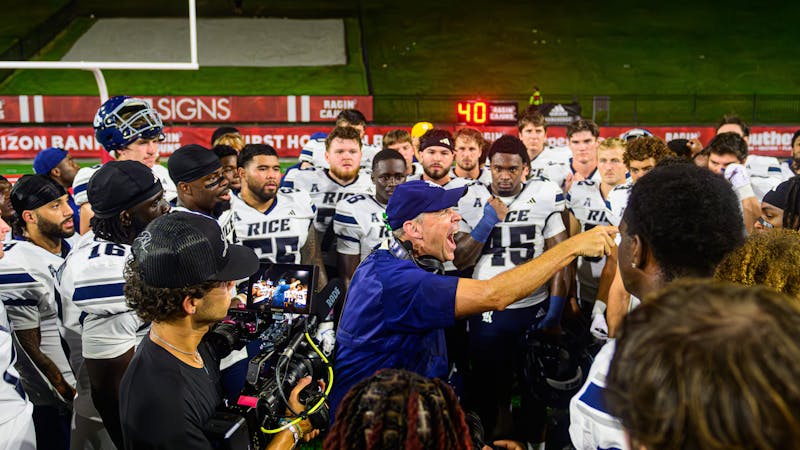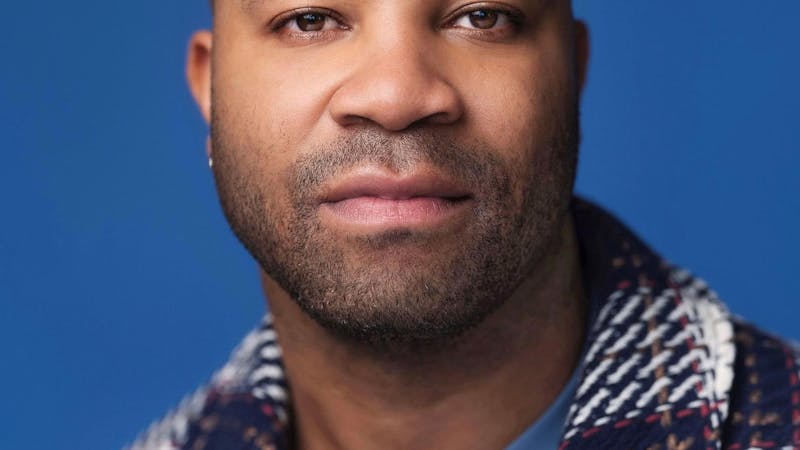Mayors discuss successes, lessons post-Ike
Six months after Hurricane Ike hit Houston and Galveston, the two cities are still struggling to recover from the damage, and elected officials are taking a chance to reevaluate preparations made before the storm. On Wednesday, the James A. Baker III Institute for Public Policy and Texas Monthly cosponsored the forum "Life After Ike: The Future of Houston and Galveston," where mayors from both cities considered what went right and wrong during Ike and what they learned.
Hurricane Ike made landfall on Sept. 13 as a Category 2 storm. According to Edward P. Djerejian, the founding director of the Baker Institute, Ike was the most expensive storm in Texas history.
Houston Mayor Bill White said that the biggest thing that Houston learned from Ike was "the devastation of a storm."
White said that the more selective evacuation procedures, compared to the massive, panicked evacuations before Hurricane Rita in 2005, were very beneficial to a streamlined relocation of the citizens whose need to be moved was greatest.
In order to prepare for the potential disaster that faced those who stayed in Houston during the storm, the city established non-published refuge centers, White said.
He also praised the Houston medical community for their support both before and after the storm hit.
In the days after Ike, White said the biggest issue was the restoration of electricity.
"We all learned to appreciate - if we didn't before - the benefit of electricity," he said.
White applauded the Houston community for its resilience and community spirit after the storm.
"In many neighborhoods, strong people with saws and chains and trucks got it done and didn't wait simply for someone from the government to show up," White said.
This was fortunate, White said, because there were severe problems in the response times of the government, and organizations such as FEMA were unwilling to give money or decision-making power to local officials.
Galveston Mayor Lyda Ann Thomas said Galveston had completed its cleanup efforts, but state and federal-level delays had slowed the process down considerably. As an example, she cited the main Galveston thoroughfares which are owned by the Texas Department of Transportation, and which the city of Galveston was not permitted to clear.
In order to avoid such bureaucratic delays in the future, she suggested that federal officials prearrange contracts for debris removal, fuel supply and sheltering. Galveston arranged such contracts before Ike, she said, making the recovery process much simpler on the city level.
An important lesson that the city of Galveston learned from New Orleans's missteps during Hurricane Katrina in 2005, Thomas said, was that "people will not evacuate if they can't take their animals." As a result, the city of Galveston evacuated 3,900 residents along with their animals.
"I cannot tell you what an interesting day that was," Thomas said. "We had snakes and birds and cats and dogs and some of them had cages, but some of them didn't have cages."
Thomas said she also appreciated the improved communication during Hurricane Ike, as compared to during Hurricane Rita. She thanked Houstonians for letting Galvestonians evacuate first.
Paul Burka (Hanszen '63), the senior managing editor for TexasMonthly and a Galveston native, said Ike had forced Galvestonians to reconsider how safe they were.
"All of us assumed that if you lived behind the sea wall, you were safe," Burka said. "Ike showed that that was not true."
He said that for Galveston to be rebuilt, the state must continue to ensure that Galvestonians can purchase wind insurance.
Baker Institute Fellow Joan Neuhaus Schann said that Houston and Galveston were distinguished from other cities across the country because they have become accustomed to facing such storms.
"Preparedness has become a culture here," Schann said.
Schann said the Gulf Coast region was particularly prepared due to close regional cooperation between response teams, well-established protocols for handling evacuations, collaboration between numerous stakeholders and past experiences.
Schann also praised the Red Cross for its storm relief work, which she said was impressive considering that the organization received no federal funding.
After each of the panelists had spoken, the forum was opened to the audience, which asked questions and offered suggestions for future storm preparedness, including forming a multi-district health region.
Thomas ended by telling the audience thatshe hoped Galveston's struggles would not deter them.
"I hope you will come to Galveston," Thomas said. "I hope you will come to the beach. I hope you will consider living there.
More from The Rice Thresher

Over 1,000 students petition against new meal plan
When Konstantin Savvon opened the Housing and Dining email announcing the new unlimited meal plan, he was instantly concerned about the impact on off-campus students like himself.

Rice football wins season opener under new coach
For the first time since 2018, Rice football opened its season with a victory. Scott Abell was soaked with yellow Powerade following a 14-12 win on the road Saturday against the University of Louisiana at Lafayette, which won 10 games and made it to the Sun Belt Conference championship last season.

Acting like an athlete: Rice basketball alum takes on Broadway
Underneath Chadd Alexander’s Broadway costume, there’s ankle tape and wrist braces — same protective gear he wore as a walk-on basketball player at Rice, though now he’s performing eight shows a week in the ensemble of “Harry Potter and the Cursed Child” instead of running conditioning drills in Tudor Fieldhouse.

Please note All comments are eligible for publication by The Rice Thresher.